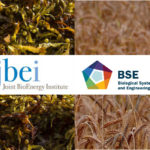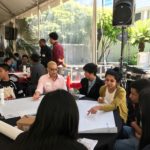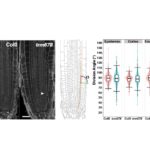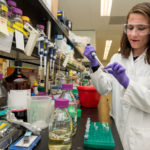Two papers by Joint BioEnergy Institute (JBEI) and Biological Systems and Engineering (BSE) researchers are currently ranked among the most popular articles published in the journal BioEnergy Research. “An Investigation on the Economic Feasibility of Macroalgae as a Potential Feedstock for Biorefineries,” published in in 2015, is among the most downloaded, and “Assessment of Lignocellulosic Biomass Using Analytical Spectroscopy: an Evolution to High-Throughput Techniques,” published in 2014, is among the most cited. In the former paper, the authors—Murthy Konda, Seema Singh, Blake Simmons, and the late Daniel Klein-Marchschamer—presented a detailed technoeoconomic analysis of the economic potential and cost drivers of macroalgae as a feedstock for the production of biofuels and biochemicals. In the latter, Jason Lupoi, Singh, and Simmons undertook a comparative review of rapid, high-throughput spectroscopic techniques and standard, more time-intensive techniques to analyze candidate terrestrial biomass feedstocks for desirable traits.
Biosciences Participates at East Bay STEM Career Awareness Day
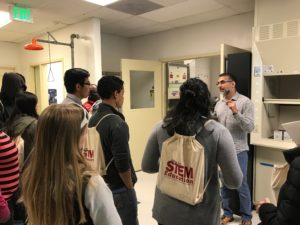 Biosciences Area researchers and staff participated at the annual East Bay STEM Career Awareness Day on April 27, 2017, at Wareham Development’s Aquatic Park Center in West Berkeley, home to Biosciences Operations @ Berkeley and several Area research groups.
Biosciences Area researchers and staff participated at the annual East Bay STEM Career Awareness Day on April 27, 2017, at Wareham Development’s Aquatic Park Center in West Berkeley, home to Biosciences Operations @ Berkeley and several Area research groups.
The event was led by Cal State University East Bay’s Institute for STEM Education in partnership with local businesses and organizations, and was aimed at providing insight into potential STEM careers and educational opportunities in the region. Three hundred high school students from Berkeley, Emeryville, Oakland and Richmond engaged in activities around this year’s theme:, “What problem(s) are you trying to solve?” Students had the opportunity to network with a variety of STEM professionals during tours, a working lunch and exhibitor tabling.
Biosciences’ Rasha Anayah — Changing the World through Research
 Among the benefits of attending the University of California is the chance for undergrads to conduct research alongside world-renowned faculty. Biosciences’ Rasha Anayah and undergraduate student interning at JBEI (Biological Systems & Engineering Division), who is exploring how to build better biofuels, was one of several undergrads who recently spoke at a forum on UC research opportunities. Read more in the UC Newsroom.
Among the benefits of attending the University of California is the chance for undergrads to conduct research alongside world-renowned faculty. Biosciences’ Rasha Anayah and undergraduate student interning at JBEI (Biological Systems & Engineering Division), who is exploring how to build better biofuels, was one of several undergrads who recently spoke at a forum on UC research opportunities. Read more in the UC Newsroom.
New Science Study Provides Further Insight Into Plant Cell Division
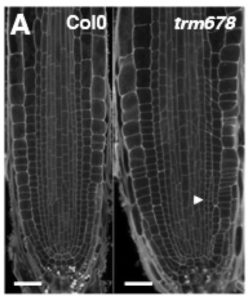 Biosciences Postdoctoral Researcher Estelle Schaefer was the lead author of a new study on plant cell division orientation released by Science on April XX. The study developed while Schaefer was affiliated with the Institut National de la Recherche Agronomique (INRA) in France and provides further insight into the actual mechanics of cell division in plants.
Biosciences Postdoctoral Researcher Estelle Schaefer was the lead author of a new study on plant cell division orientation released by Science on April XX. The study developed while Schaefer was affiliated with the Institut National de la Recherche Agronomique (INRA) in France and provides further insight into the actual mechanics of cell division in plants.
One phase of the cell division cycle is called mitosis, which is when replicated chromosomes are separated into two new nuclei. Mitosis occurs in several steps and in plants includes preprophase. Schaefer’s work focused on the preprophase band of microtubules, intracellular structures responsible for various movements within cells, and showed that this band controls the robustness of cell division orientation and consequent plant development.
Since completing her PhD three years ago, Schaefer has worked in the field of cell wall biosynthesis with Henrik Scheller (Environmental Genomics & Systems Biology Division) at the Joint BioEnergy Institute (JBEI). She will soon transition to the DOE Joint Genome Institute (JGI) where she will work with John Vogel to study the interactions between Brachypodium roots and microbes of the rhizosphere.
Could This Enzyme Help Turn Biofuel Waste into Something Useful?
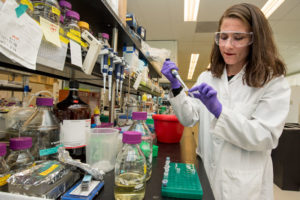 Researchers at the Department of Energy’s Lawrence Berkeley National Laboratory (Berkeley Lab) and Sandia National Laboratories working at the Joint BioEnergy Institute (JBEI) have resolved the protein structure of the enzyme LigM, which is utilized by the soil bacterium Sphingomonas to metabolize aryl compounds derived from lignin, the stiff, organic material that gives plants their structure. Their work is reported in this week’s Proceedings of the National Academy of Sciences. Read more in the Berkeley Lab News Center.
Researchers at the Department of Energy’s Lawrence Berkeley National Laboratory (Berkeley Lab) and Sandia National Laboratories working at the Joint BioEnergy Institute (JBEI) have resolved the protein structure of the enzyme LigM, which is utilized by the soil bacterium Sphingomonas to metabolize aryl compounds derived from lignin, the stiff, organic material that gives plants their structure. Their work is reported in this week’s Proceedings of the National Academy of Sciences. Read more in the Berkeley Lab News Center.
- « Previous Page
- 1
- …
- 26
- 27
- 28
- 29
- 30
- …
- 37
- Next Page »
Was this page useful?


